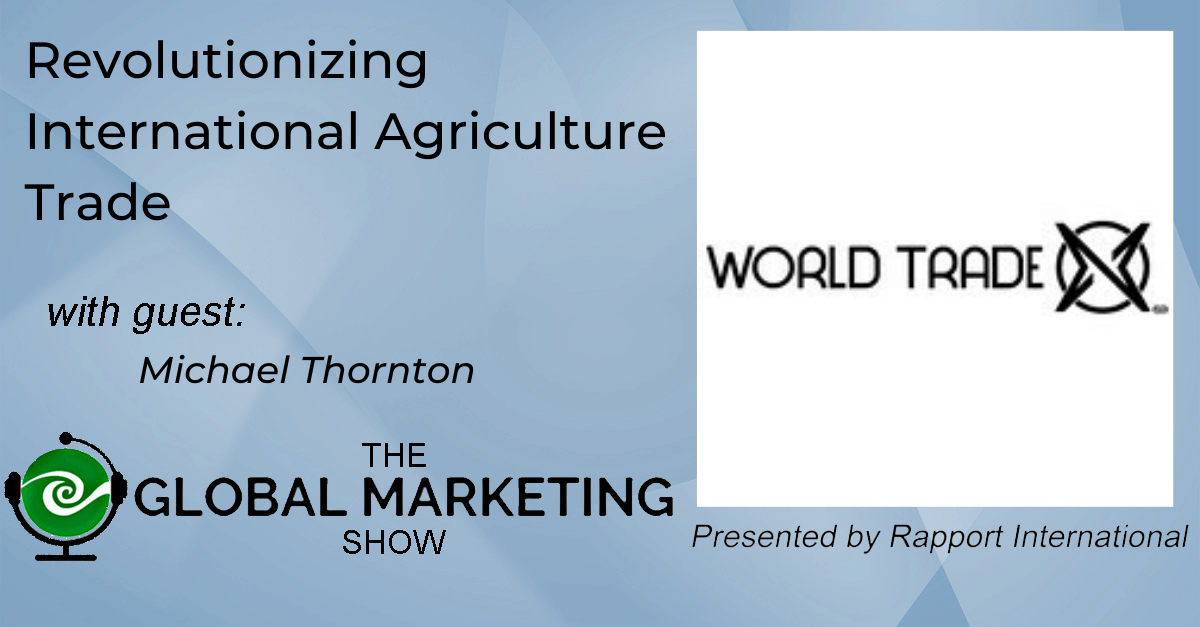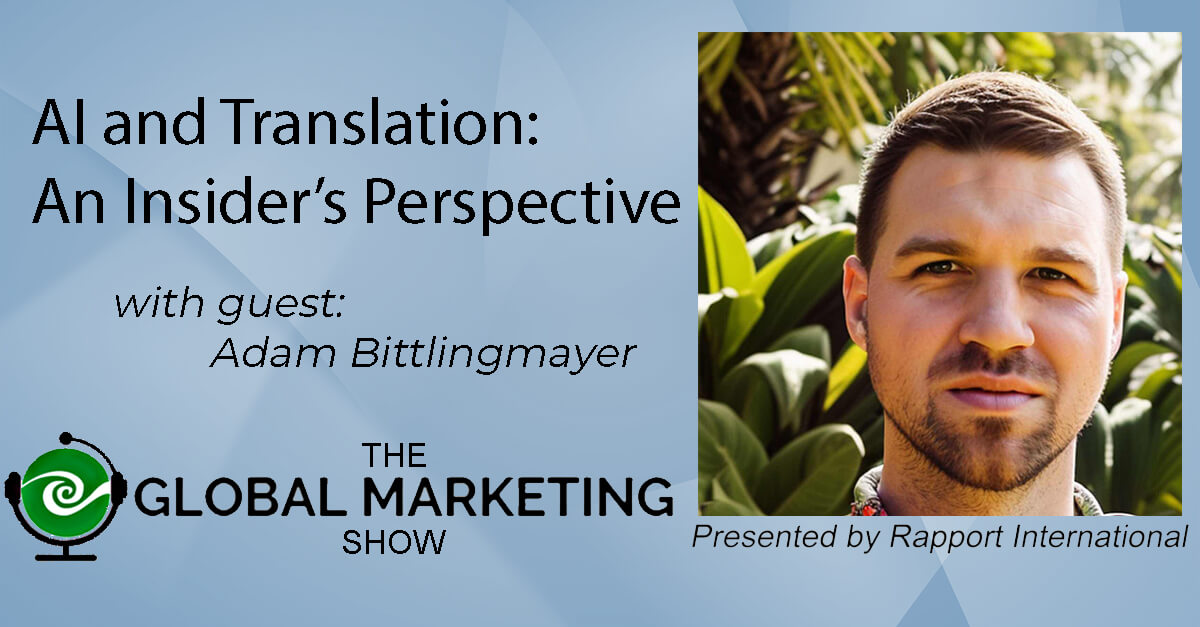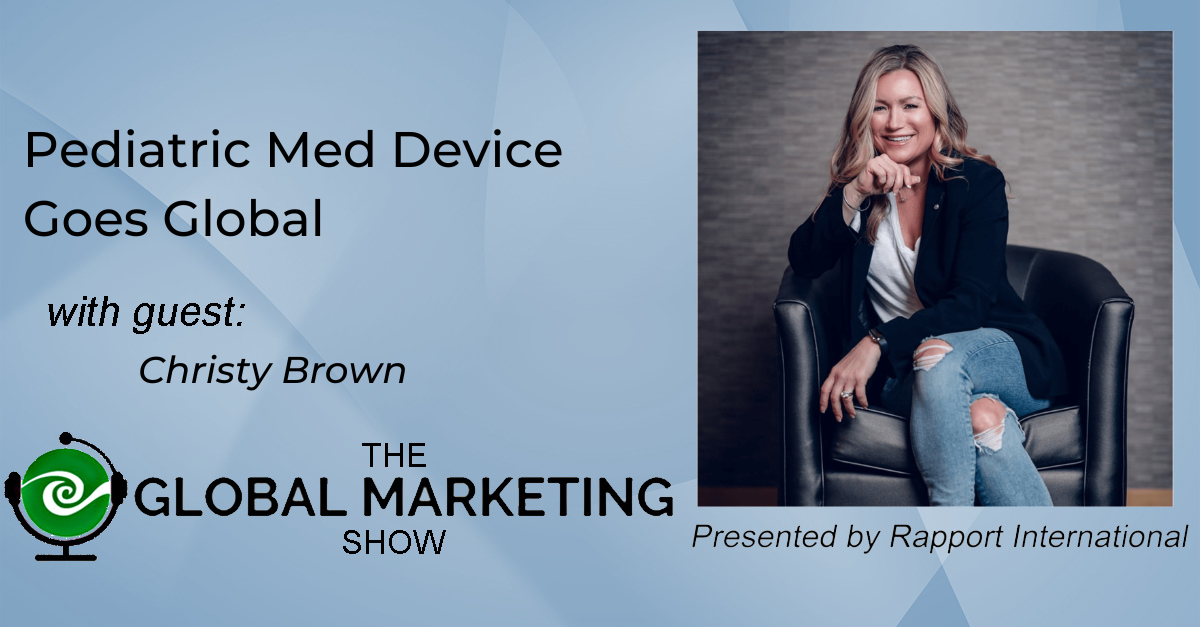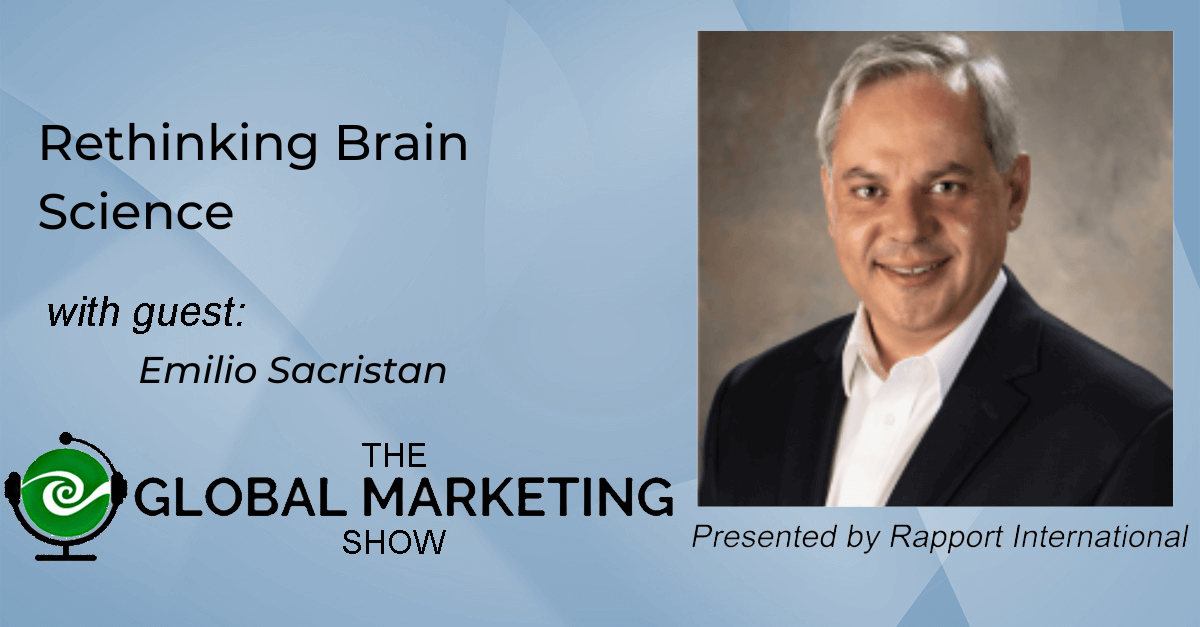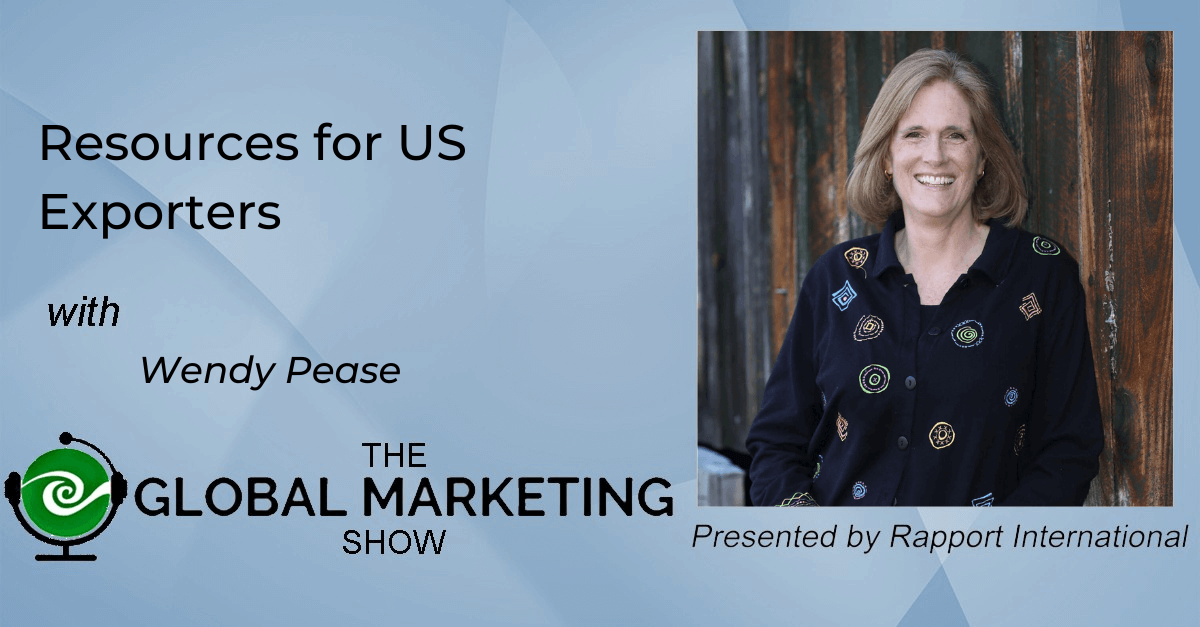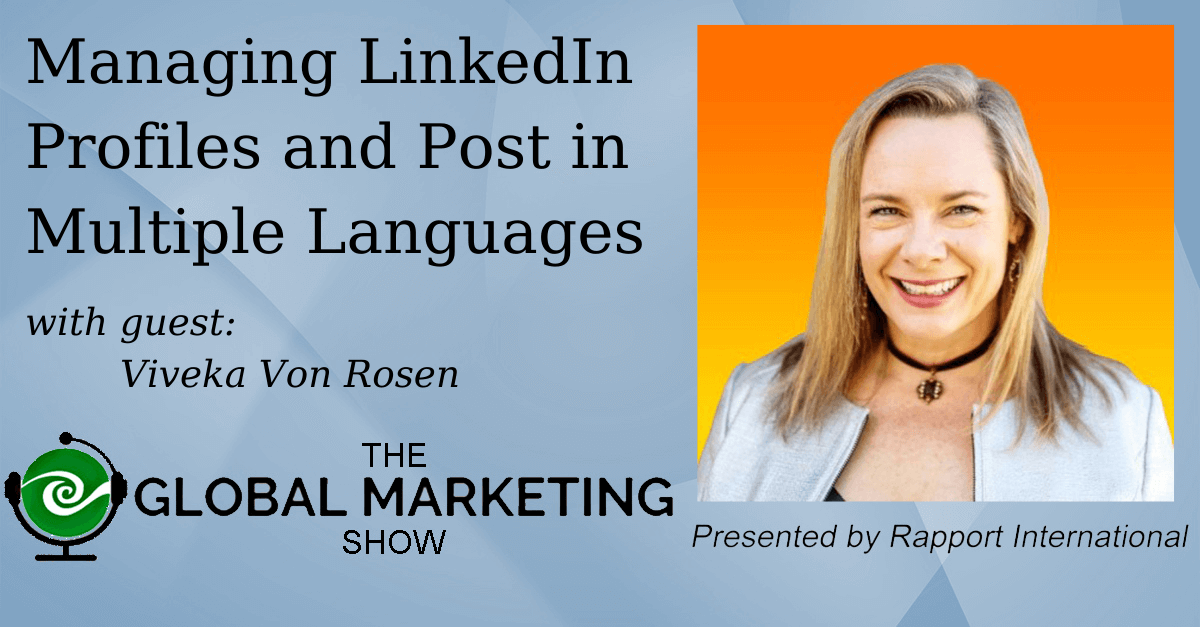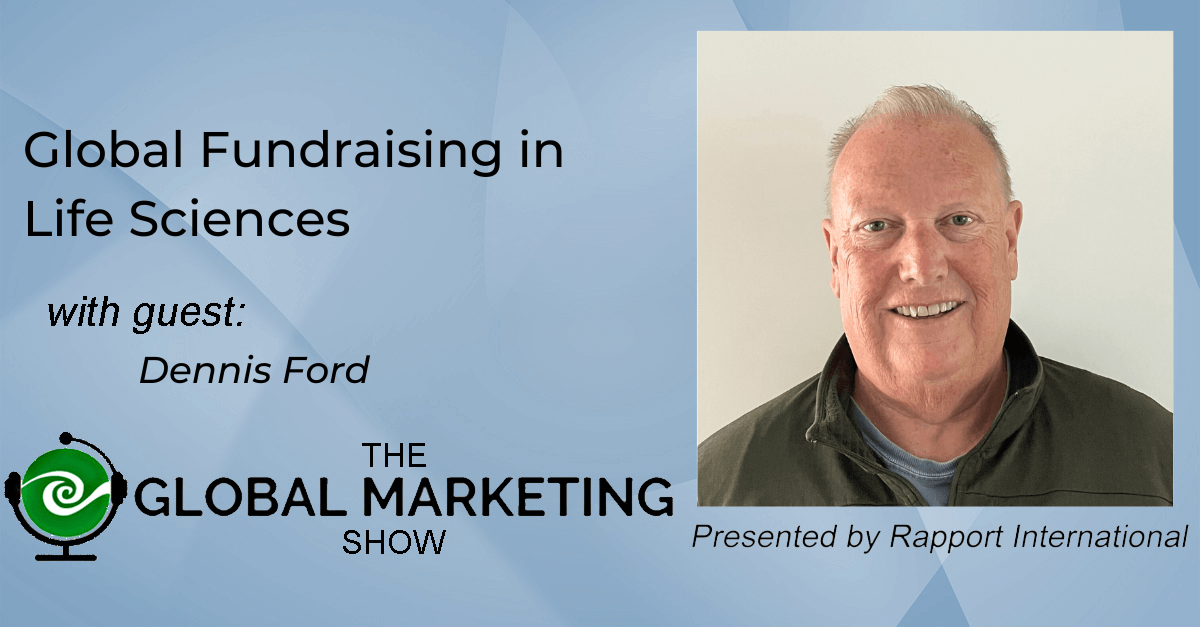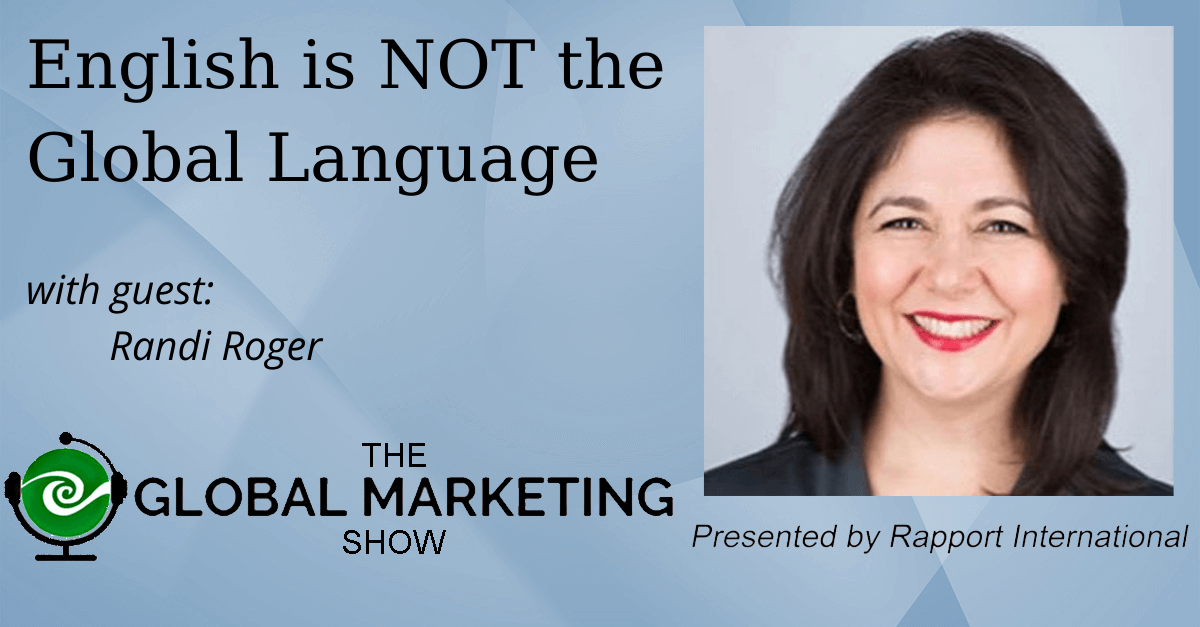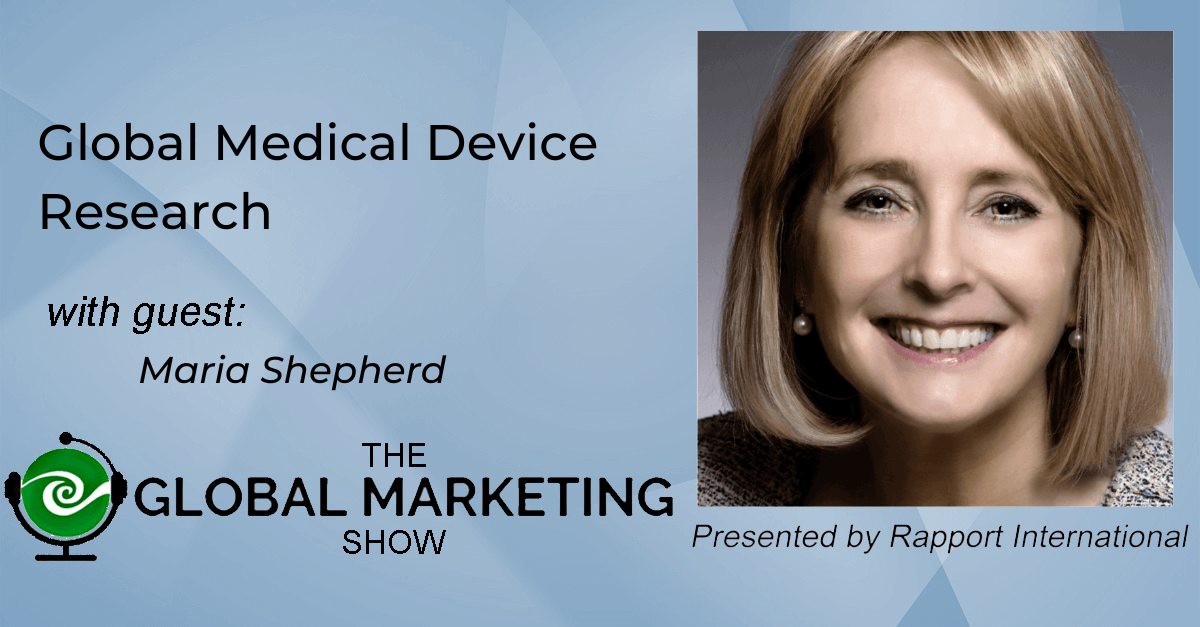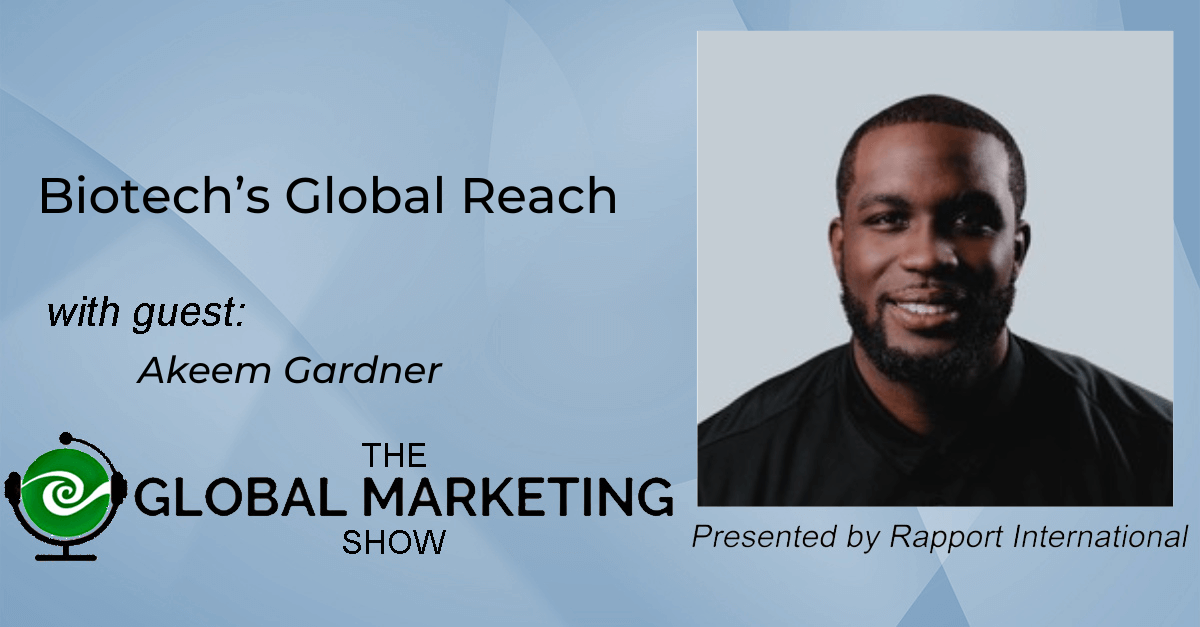Natalya Berdikyan is Founder and CEO of Life by Design, an executive coaching company “help[ing] individuals and organizations grow beyond borders and boundaries.” A truly global citizen, Natalya hails from the former Soviet Union and has lived in 6 countries; she speaks 4½ languages. A former executive for a multimillion dollar chocolate producer in Belgium, she has sold confections all over the world.
I found it fascinating to learn about confectionary global preferences – for example, Natalya’s almond sweets are gifted on specific occasions, depending on the country:
- Belgium – to welcome newborns
- Italy – to celebrate marriage
- Luxembourg – for communion
- Portugal – at Easter
- Norway – on Valentine’s Day
Natalya used a “pull” strategy to enter each market: trade shows allowed her to assess the current landscape then develop unique, differentiated products. Focusing on innovative color creation, distinctive merchandise, and special packaging for holiday and special occasion gifts, the company’s custom manufacturing option also meant made-to-order adjustments – for one, customized ingredients to meet changing consumer demands for healthier treats. Retailers and distributors were inevitably “pulled” in, attracted to the opportunities for originality and increased market share.
The company catered to three major outlets:
-
Bulk sales to distributors packaging product for multiple brands.
-
Co-created, co-branded product for retailers.
-
Company-branded product sold direct-to-market.
As co-owner of the confectionary company, Natalya met with clients worldwide and during her travels, developed a cultural intelligence that fueled her success. She recalls her early confusion in the US when asked: “How are you doing?” No one expects an answer, she says, it’s used as a greeting! She had to learn how to stop answering the question.
In the very middle of running a successful company and a perfect life full of parties, money, and achievement, Natalya realized she felt unhappy. Upon slowing down to figure out why, she realized that she had bought into society’s rules about what success looks like, and a life full of wine, money, sugar, and limiting beliefs did not feed her soul.
Drawing on that experience, and the belief that anyone can thrive – not just survive – through life changes, Natalya launched Life by Design, an executive coaching firm designed to help entrepreneurs and leaders build the life they want. She provides coaching, training, and holistic retreats to improve people’s energy so they can become better leaders in business and in life.
If you’d like to talk to Natalya, you can reach her on LinkedIn or through her website.
Links:
More About Natalya: https://www.lifebydesign-academy.com/about-natalya
Website: https://www.lifebydesign-academy.com
Contact: contact@lifebydesign-academy.com
LinkedIn: https://www.linkedin.com/in/natalyaberdikyan/
YouTube: https://www.youtube.com/@natalyaberdikyan
Facebook: https://www.facebook.com/natalya.berdikyan
Instagram: https://www.instagram.com/natalyaberdikyan/
Connect with Wendy: https://www.linkedin.com/in/wendypease/
Music: Fiddle-De-Dee by Shane Ivers https://www.silvermansound.com
ATTENTION: Below is a machine generated transcription of the podcast. Yes, at Rapport International, we talk a lot about how machine translation is not good quality. Here you see an example of what a machine can do in your own your language. This transcription is provided as a gist and to give time indicators to find a topic of interest.
Wendy: Welcome back to another episode of The Global Marketing Show. I'm Wendy Pease and I'm thrilled to have you here. As you know, we're brought to you by Rapport International who connects you to anyone anywhere in the world in over 200 different languages. And today's Tidbit is about knocking on wood cuz you're gonna be knocking on wood at the end of this one.
In Germany, it's a [00:01:00] tradition to knock on the table to applaud at the end of a very good meeting or a lecture, you don't hand clap in Germany unless you're at the theater or concert. So get the wooden near you because like I said, you're gonna love, love this interview today. So Natalya Berdikyan. Is our guest today.
She's a business expert, a culture expert. She's a language expert. She speaks four and a half languages, and I met her through Entrepreneurs Organization where I know that she's extremely well-liked and knowledgeable. She also does a lot of coaching to help people get from stress to joy. But today, We're gonna talk about chocolate and the global market of chocolate.
So Natalya, welcome. I am excited to have you here.
Natalya: Thank you. That's, uh, that's a beautiful opportunity. Yes. Two, 200 [00:02:00] languages. Wow. My four and a half. I'm lost in there.
Wendy: What's the half a language I got curious about? Well, it's
Natalya: probably one I should speak, but I lived in Holland and in Belgium and it's Dutch.
I understand it. I speak some of it, but somehow it never landed with me and I lived so much, so long around it. Something with that language. I appreciate it a lot and I understand it, but yeah, which
Wendy: is interesting cuz you speak German.
Natalya: No, no, no. It's really, it's French, Spanish, Russian, and English, and, well, Dutch.
I did live in Germany, but I lived much, much longer in Holland, Netherlands. Oh, and yeah, try not feel ashamed for not speaking it fluently, but hey. No guilt.
Wendy: Sorry. Most people don't speak more than one language, at least here in the United States. So four and a half languages is very good. Now, I wonder [00:03:00] if I speak some Spanish, French and Italian.
Does that mean I speak two languages if I speak about a third of each of those?
Natalya: Well, whatever you think. Whatever you feel comfortable saying.
Wendy: Yeah. So tell me what's your, what's your favorite chocolate and how'd you get into the chocolate industry? Wow.
Natalya: Chocolate. It's a, it was a journey to get into chocolate.
Before chocolate, I was in business aviation and publishing in IT supplies and real estate and you name it, chocolate. Chocolate. So I was living in Belgium at a time and my now ex-partner. Proposed to, to have a venture together and it is an amazing brand, 130 year old brand in Belgium that is, produces very beautiful traditional products that are used for very niche occasion, especially in [00:04:00] Europe.
When the babies are born or when there is a wedding on, there is a communion. They give those s as a gift and they come in 50 different colors. Not, not tall, not the 200, but 50 different kinds, beautiful colors. And it's kind of like almond coated in sugar or chocolate coated and sugar, kind of like sophisticated m and ms, but sophisticated, beautiful product, lots of sugar and lots of.
Wendy: Okay. And so that's a traditional gift in Belgium during, or in Europe,
Natalya: exa Belgium. So in Belgium they give it for birth. So when the baby's born, they choose a color for a party or a couple of colors, and they, they make a little box where they put littles. Those little. Almond coated and, and sugar in a particular color, and they give a little box to each person that comes to greet the baby when there is in, in, in Italy, [00:05:00] for example, it's for the wedding, and weddings is a big thing in Italy.
They love getting married. They also love getting the worst and then getting married again. So very popular over there and they give it as well. Well for the guests at the wedding, I'm going to wedding Italian wedding in in June and then in Luxembourg, which is next door to Belgium, they use it for communion, you know, couple times it more religious thing around 12 years old I think.
And then in Portugal, they use those for Easter, which is coming up. So they basically give it to all the guests that. Easter colors and while one needs to be very careful not to break a tooth on that thing, because again, it has a lot of sugar, very beautiful, but a lot of sugar. So every culture, every country, and then there is Middle East, Turkey, Jordania et cetera.
They use the almonds items in sugar also for different occasions. So it's quite a cultural [00:06:00] thing and for, in different countries, it's used for a different purpose. So we produce those and we're a market leader for that product, which is becoming less and less used, I must say, cuz people prefer to give anything but chocolate.
Hmm. Nowadays. Okay.
Wendy: So you, so you and your former partner decide that you're gonna take this, this business and the global marketing must have been fascinating for that because you had to figure out. The chocolate, the sugar covered almonds. Chocolate covered almonds were going to be, or when they were gonna be gifted in each country, which would be different.
Natalya: Totally. Totally. So in in US, that would be more like crispy type of things. Kind of like m and m, crispy m and ms, but with. Different layers of sugar to give it a beautiful color. So it's [00:07:00] nice, it looks, it looks nice. It's not just m and ms at a low price. It's more a high end product. And really every country had a different tr.
Addition and a different look at that product because it's not something you would just buy and eat. We were, we were developing new gifting packages and different gifting items. So it's something nice to put at the table with a nice packaging, for example, like a, a little flower that opens up and then you have those items in the middle to give away and share with other people.
So it's the tradition that is being created around chocolate. Can you walk
Wendy: me through the process of how you figure this out? Because you know, you've gone through the journey and so you can, you know now what each market wanted, and then so you think about the creative, but here you start in Belgium and it's used for babies.
And then what did you, what was the next [00:08:00] step? Did you say, we're gonna go into a new market, or, you know, did you pick a market or did you do market research? Like how did you develop your marketing strategy? International expansion. Well, it started
Natalya: understanding what. What actually exists. So going to an international chocolate fair, for example, an exhibition, there's one in Germany, in us.
I went to New York Paris, et cetera. You see what is actually present on the market and from which countries. And then, and having a stance there. Different countries started coming to us, so we had requests from, from Norway, for example. There's a chain, I think it exists also in Canada. It's called Tiger and.
They're 500 different shops and they were co-creating products with us. For example, there was a Valentine's, right? It's a Valentine's, so we would create little chocolate hearts [00:09:00] coated in red or pink, and do a mix of red and pink, or red and silver with real silver. It was the most expensive ingredient in the factory, real silver leaf, and that was coming from Italy.
Yeah, very expensive. You don't wanna lose the box of silver from Italy to Belgium, so, You know, you have different occasions because it's, it's a festive thing. So for each holiday we started creating different items. So we had Valentine's, we had Easter. Then for Easter, different countries while people like eggs.
So because we are specialized in. Coating, right? So taking a chocolate or taking a knot and coating it with sugar, and then the color around. So then Easter eggs, so coating Easter eggs in different colors. And then you have a mix of different color eggs that you can give to a friend when you come visit, or.
Eat it yourself, but it's, [00:10:00] it's, it's nice. It's beautiful. It's a beautiful item to gift and to have on the table. Then we have, for every holiday, there was a product that we could create for a football. There is a football match in Belgium. So we'd create the, the yellow yellow, black and red. A little m and m kind of product thingies in, in the bag.
And there's a lot of marketing around packaging because at the end of the. It's sometimes it's more about packaging than the product. To the packaging. And if you look at the packaging and then you look at different markets, how, how, which packaging should we create? So it's also feasible to transport and most cost effective.
To produce, pack and transport. So all of these things had to be considered for different markets. If you look at Japan, for example, they, they prefer to have nice little chocolate items in a nice, beautiful [00:11:00] box and pay a lot for, it wouldn't work in Belgium. And especially won't work in US because it has to be a more, a massive, a massive product, massive production, low margins, simple packaging.
So it really for different markets and different occasion and different retail store than we go into. Another aspect of it, is it a boutique shop, a specialty boutique shop, or is it a retail store? Is it. All foods or is it all illegal somewhere in, in Germany. Well that was an interesting, uh, project there.
So it
Wendy: sounds like a lot of your effort went into the creativity on what kind of products and what kind of packaging, and so your, your strategy was more. It sounds like people heard about you and then came to you because you [00:12:00] do a unique thing, or did you have to, what did you have to do to sell or open a new market?
Natalya: To sell and open a new market? When they came and they saw the product, they just liked the product because it's nice and pretty. Now the question was how do we package it and for which price can we buy? So we can actually make margin. And then if you look at Russia, they love the product. Now, if you have a local production and local packaging, the question starts, okay, how about you import?
You export bulk, and we package here, for example, because the cost of packaging and transport is just so huge. So at the end, it was really working with the client to co-create a product and the packaging that would suit [00:13:00] their market. So a lot of further sales were really based on working with the client and hearing and listening to their needs to create something that would fit their market and would give them a unique selling point.
Okay.
Wendy: Your clients were like the tiger chain in Norway
Natalya: as a, as an example. Yeah, it it, that is a good example because, A retail chain at the end of the day want to be unique. Every year they come up with different product line. Sometimes it's the same, but generally they come up with a different product line.
They improve in the quality. Then there's a whole question, okay, can we have more natural ingredients in our cases, colorants, more natural colorants, et cetera. Based on plan, plant-based colorants, for example. Cuz we were all about the color. So how can you maintain a beautiful, [00:14:00] stable color and be natural?
Mm-hmm. That was a good challenge as well. So go through all of these challenges and it's a, it's a beautiful, it's a creative process. So for UK market it's more. For example, uh, a more mass market situation where we would have to create a product that is cost efficient, beautiful, efficient to export and sellable in their chain.
And they're the best people that would know what sells the best in their store.
Wendy: Oh, interesting. Okay. So you would go to the conferences. People would like your product cuz you could customize it for them. So they would be very unique and different as the retailer. And then they would give you suggestions because they knew the local market.
Correct?
Natalya: Correct. We, at the same time, we [00:15:00] were also creating our own branded products in our packaging. But the reality is the volume was coming. The clients themselves. And because we're a producer, not just a brand, but a producer, like any producer, you can create anything the client desires as long as it sells and it makes it cost, covers the costs and makes money ideally.
Right,
Wendy: right. Yeah. So when you're talking about, you know, the Belgian. People wanted to have it for the babies, or Italians wanted to give it as wedding gifts. You were really selling through the retailers and they, they would tell you what they wanted to offer so that they, they could get a bunch of them in and then sell so many of them onto the end Client.
Natalya: Correct. Yeah. There are different situations once the [00:16:00] sale, the bulk sales. So we just would produce bunch of Easter eggs and sell it to a distributor or a, a, yeah, a, a chain. And they would pack it themselves with their branding. So there was one situation like that, for example. Another one was developing something for the.
Client and already deliver packaged products, either our packaging or co-created with them, because then they're sort of responsible as well.
Wendy: Right. Okay. So you have the book sales, which they would do their own branding in their, their own packaging. And then you had kind of another level, which was the co-creating.
For the, the branding and the packaging? Correct. And then you had your own branded products.
Natalya: [00:17:00] Correct. There's a lot of innovation, a lot of creativity in there, which is really great because you can go anywhere from here. We, what we were creating were several new colors every year. And again, that was also.
Trended by the, the color trends of the packaging. So it's interesting. Everything was sort of correlated and connected. Right. Okay. Kinda like instance if the general health trend. No, that's what happened then. General trend is to have lower sugar products, more natural product. Stevia, et cetera, blah, blah, blah, natural colors, et cetera.
So if that is a trend and the consumer is looking for those items, packaging with zero gluten, zero sugar, zero, that, and that and the other, as a [00:18:00] producer, as an retailer as well, you are sort of under pressure to deliver to the needs of the client, right? So, and then you start innovat.
Wendy: Right. So your core competency was really how do you, how could you do production runs?
Of things that your clients are asking for. So being very creative, new colors, new ingredients, but being able to produce it, produce high quality chocolate gifts or almond covered. Well, no, cause you didn't use almonds and everything cuz you said you had some other We
Natalya: different products. So it was almonds, I was chocolate coated in sugar.
It was almonds, coated in sugar. Crispy things, coated in sugar. So everything cold in sugar, I think sugar was 80% our ingredient. And that's how Ira switched from energizing people by sugar to energizing people with their core resource being [00:19:00] their own energy, which is an interesting switch.
Wendy: Yeah. And we're gonna get to that. Okay. So this has been fantastic. So you have also lived. What was it, 24 different countries in 25 years?
Natalya: No, no, no. It was six countries. I moved 25 times in 25 years. Well, 25 countries. That would be a bit much,
Wendy: but no six. Yeah, I, I was trying to do the math on that. I'm like, that's a different country every year.
But it didn't seem like that was Okay. So six countries in 25 years,
Natalya: six countries, 25 years, and I did move within the countries. Yeah. Yeah.
Wendy: All right. So talk to me here you are. You were born in Russia, you moved to the United States when you're 16, you li, you've lived in multiple, you ran a company in Belgium.
Talk to me about becoming a global citizen. Like what have been some of the biggest shocks when you've moved around? How did you become a global [00:20:00] citizen? How did you develop that cultural intelligence? Well,
Natalya: when I was 16, well my grandfather was a diplomat, so I think thanks to him, he sort of gave a green light to my mom to let me go to see the world sort of.
And that's what I did since 16, when I was, when I went to us. It was an exchange student program. It was nothing in exchange about it. I went one way and instead of living in one family, I ended up living in four different families, going to two high schools instead of one. So speaking about cultural change like four times over and adapting.
To change. I didn't speak much English when I landed and I remember my whole sister picking me up with the family and I was trying to understand what she was saying. Cuz you know, kids speak slightly different. Articulation and I was [00:21:00] thinking, wow, if I can understand her, I can understand anything. And I had to go to school and everything.
And now which
Wendy: state was that in? Because that can vary too.
Natalya: I was lucky. I was lucky. So imagine going from Moscow, former Soviet Union to California in the nineties. In the nineties. I mean, people in high school were asking me, where is Russia and do you, do you have bears walking around?
Yeah. So yeah, cultural shock was big, but then it was also the other way around. When I was at the customs, a year after standing in the coms, the customs back then the nineties, Russia was still very brown and gray and. In us. Everybody's smiling right? All the time, and she, I, I'm asking, is anybody smiling in this country?
And she looks at me seriously. She [00:22:00] says, if you don't like it, you can turn around and go back. I'm like,
Wendy: Oh my goodness. You're in California. Yeah. So you were expecting more people to smile after a year in the country and then you tried to go back home that you grew up in and it,
Natalya: I had a cultural shock. I had a culture shock when I was going back and, and it took me, I think one and a half years and I left, and then I was living in Europe ever since.
I mean, Russia changed since then, of course, many times over. But Global citizen is, yeah. Then going to Holland and not speaking Dutch. Luckily people there speak English and they speak English that well. They actually don't facilitate you learning their language, unlike France or Belgium or Spain where not everybody speaks English and then you sort of oblige to adopt and learn and which is great and hence the four [00:23:00] language.
A part of the Dutch, because the Dutch all speak and love speaking English and they love adapting to others. And plus that nation, they, because of the trade situation of Netherlands, they all speak like five different languages. So yeah, my four and a half is nothing because they had to trade with all those countries.
Right,
Wendy: right. Yeah. I remember walking down the street in. In Amsterdam and somebody spoke to, a woman spoke to me and she said something in Dutch and I said, I'm sorry, I don't speak it. And then, you know, I just gave her a look like I don't understand. And then she switched to German. I did that again.
And then she switched to English and we kind of laughed and I was like, that's just amazing. That quickly she could
Natalya: switch. Yeah, because you actually could be Dutch or German looking at you. Oh, yeah, yeah, yeah. So no wonder that she spoke to you in those languages first. Right.
Wendy: [00:24:00] And I tried to wear, when I was traveling around, I tried to wear very, you know, one color, not, not something that had like Arizona plastered across it like I'm wearing now.
So you couldn't, she couldn't tell where I was from. Yeah, yeah, yeah. So, okay, so one of your big, so it was a culture shock coming into the United States, a culture shock going back into Russia, and then is there another big culture shock? Share with us and how you adapt. Sure,
Natalya: sure. So I met my ex now ex-husband who was Spanish, a lovely, lovely man, smiling all the time.
And we moved from Holland to Spain, but to Canarian Islands. So those are the Spanish islands in next to Africa. They're actually closer to Africa than they are to Spain. And so, and it's an island. The capital girl of two 20 million people going to an island, which is a million. And going into a Spanish family, not really [00:25:00] speaking Spanish.
And not only it's Spanish, it's like some up in the mountains, Spanish, where people eat half the world. At least my father-in-law, it's half of the world. So I learned. Halfway sort of, it's not even that, but the culture shock is, you know, coming from a very efficient. Cultures where it's all about performance and doing and stuff.
You come to a Latin culture, which canner islands are more Latin than they're Spanish. So there's a difference between Latin American culture and Spanish culture there. You know, you go into a family lunch thing and those things last for six hours. You know, and you can love them to bits, but at some point, and it's not like you talk about high level things and business and politics and all kind of cultural things and stuff.
I don't even remember what. We talk about not much and [00:26:00] six hours of a lot of sort of sun, the nice wine that is produced right there because every other person has a winery and lots of food, big mix of food that your stomach grows, like turns around after a few hours. It's a custom, it's a tradition of, uh, a social culture.
It's not about. It's not about food, it's not about conversation, it's not about music. It's all of this together. You have guitars, you have the music, you have the laughs, you have everybody speaking the same time, so six hours after your head explodes, literally, you know, the wine, the heat, the speak, all speaking at the same time in the language that you know, half spoken.
So this is it. It, it took a while and then I left because living on the island is, is quite sort of suffocating at some point. And I went back to the capitol, but I [00:27:00] can tell you I go back every time I can and it's the culture, the people that give me the most humanity and love unconditional.
That I have ever experienced. They don't care where you come from, what you do, how much money you have on your bank account. It's just sincerely, purely there. And that's that richness that I haven't seen anywhere else in the world. Latin America compares to that. That's why I really love the Latin cultures.
They're just, it's not about materialistic stuff. So. Six hours drinking water and tomatoes and whatever they find in their garden makes them feel happy. Uh, yeah. So culturally different, but very familiar.
Wendy: Yeah. That's fantastic. I love that. Now, [00:28:00] before, I mean, so we've talked about cultural intelligence, how we go in and we just talked about emotional intelligence.
You also in some of your work are doing, how do we wrap in ai, ai emotional intelligence and ci, cultural intelligence? So you've been doing some work or some thinking about that. Can you talk to me?
Natalya: Well, certainly we are moving at such huge speed pace in life and businesses, artificial intelligence, tragedy, it's all taking over.
People are losing jobs or they're com scared of what's tomorrow? They're confused. Their businesses are falling apart or just in shock. How are they catching up with all of that? And through all of this, the speed of light. People do need to balance, and that emotional intelligence and that cultural intelligence is key.
[00:29:00] Meaning that in order to stay well and balanced as much as we need to be following the trends and being, you know, Where the curve is and where the development is. We need to be balanced ourselves. We need to feel well, and I focus a lot on wellbeing and health and how to increase that sense of fulfillment with having less stress because, you know, if we have to run in front of the train, one needs to be very zen.
In order to be okay with everything happening around, I
Wendy: don't think I could be zen and run in front of a trade. Mm-hmm.
Natalya: While you start, you start gravitating, I must tell you start gravitating, you are leaving the body and sort of floating in a way and. One just needs to be very well aware and [00:30:00] be present and be an observer and participant at the same time, otherwise you go nuts.
Mm-hmm. So being emotionally intelligent, not only about around what's happening around us with people, teams, people we live with, but also about ourselves, you know, connecting. We are at some point so disconnected to who we truly are and where we are because we are trying to
Wendy: experience share of why, how, how you have felt that and how you modified your life to get to where you are on this.
Okay?
Natalya: Yeah. Personal experience share. So I found myself. Living several years ago, living a picture, perfect life, great business, great house, great family, money [00:31:00] car, great friends, great house parties, achieving everything that we are taught to achieve. You know, house, dog, family, all that stuff. Mm-hmm.
But then at some point, I found myself not being myself. It's like picture perfect wasn't perfect. And so going back to the core, taking off all of that, what society said we need to be and we need to do to get more connected to the core. And actually go back to, okay, what actually makes me happy? Is it the house?
Is it the car? Is this all the achievements and all the checks that I put at the end of the day? Done, done, done. It's not about that because one can actually lose themselves a lot with that. That's [00:32:00] why I work a lot with highly ambitious individuals. Mainly even male entrepreneurs because they're all about getting,
Wendy: wait, wait, wait.
So let me finish that there. So you went back to get into your core and so you know, you weren't, it sounds like you weren't happy and it wasn't a picture perfect life. So what did you change to get back to
Natalya: happy? Everything or everything. I've gone out of operations. I went into education.
I got certified in, in coaching. I focus on energy leadership coaching. I became a yoga instructor. Breath work went into complete different lifestyle in terms of nutrition activities, sports, no drinking. Different lifestyle, different habits. I've changed the country yet again as I love doing that. As you see, I changed the country, [00:33:00] the business, basically getting back to the core of really asking, taking away all these layers, all the baggage that we carry, all the limiting belief.
Who am I really? And what do I want? What makes he me happy? What actually gives me energy? And that's why the, the funny thing about moving from the sugar energizer to inner resource, the energy that energizes.
Wendy: And so who you were starting to say who you work with, who do you, and, and who you work with, I'm assuming correlates to who suffers the most from limiting beliefs and society rules?
So what do you, what do you see in that area? [00:34:00] And we're, we're getting off of global marketing here, but I think people that do global marketing and have to travel a lot can really struggle with this too if they don't love the travel. So certainly let's bring it back to the types of people that you're working with and what their biggest challenges are to changing or, sure.
Natalya: Where I always worked in the quiet male dominating industries or groups generally. Even when I was in marketing and sales and business development and then going into industries that were predominantly male and then into leadership and entrepreneurship, these people, people have a lot of pressure to perform.
Mm-hmm. To have the certain image that they're successful, that they're intelligent, that they're smart, that they're strong, that they can handle the resilience, all [00:35:00] that stuff. But when do they actually have the time to be themselves, to be vulnerable, to be authentic, to be true, just to be rather than to do so.
Less heavy. And so all of that, all of this weight that they put, all the expectations that they put in themselves or the society puts in themselves and then they feel a lot of responsibility towards the family, towards the business, towards the team. It's so heavy. They get overwhelmed, overloaded out. It starts affecting their health, their relationships, the way they experience life, the way they show up.
They're not at the. Level of their leadership, neither, although they think that they are because they're working through it and they're sort of grinding and they in that reds race thing. But that's not where the core potential is. It's not [00:36:00] by putting self under so much pressure that their genius and their best capacity comes out.
And so moving them into a different state, that's what I really love doing. And that's amazing cuz that gives them their life back, their capacity back, their freedom, their joy, their happiness together with all the success, but then with less effort and less stress. Mm-hmm. So
Wendy: they can still do what they were doing, but if they can figure out how to be their authentic self.
Well, then they're gonna live life more in balance. Yeah. So I guess I heard an old qua, an old formula from my coach, Alicia Maria, people biz. But she said to be plus to do equals to have,[00:37:00]
Natalya: right? Yeah. And, and I move the people from the. To have to having to not needing and having that abundance because it's there to start with.
Yeah.
Wendy: I've always. I've been really curious. You're multicultural and you talked about you know, the Canary Islands and where people live there and they focus more on humanity and how you can be helpful there. Uh, I mean, happy there and included. Does this. Driving to do? Is that cultural, like it comes more from these efficiency cultures, or is this something that goes across entrepreneurs across the world or certain types of people, you know, your, your client types across the world?
Natalya: Right. I would say [00:38:00] both. Firstly, entrepreneurs are more driven, but they're also driven by purpose. The higher purpose and impact and passion, but culturally, definitely there's a big difference between working with US people versus Spanish a European versus north America. North American generally in Europe.
We work to live and we don't live to work. Mm-hmm. Hence there's more holidays, more quality of life. People enjoy the sun, the meals, the social for six hours. Okay, those are weekends, but still, that's why CS does they go into two hours with the glass, with the people. It's all about the people and connection.
It's not about feeling productive. [00:39:00] They don't associate the value. In doing their own value is not just what they do, it's who they are. Mm-hmm. Now, now that's north America versus Europe. In Europe, however, you can definitely see different culture trends of Germany and Holland, where people are more process oriented, they're more structure oriented, they're more rules oriented, they're also more reliable.
You know, the train in, in Germany and Switzerland works by the second. If a Dutch says it's four, it's four. It's not 30 minutes later, like the Spanish
Wendy: as the rule. So does this make a difference on how you are targeting your clients now?
Natalya: Not necessarily targeting, they sort of come to me. Energy attracts like energy and that's where the need is.
But I would say I am more, I'm [00:40:00] working with the US clients more than I'm working with European at the moment.
Wendy: Plus there's, so there is a very, very cultural element to it,
Natalya: but plus there is a big need in general in terms of mental health. Generally in the us like here, it's, it's really, again, it's, it, it has to do with nutrition, with sleeping habits, with social ha environment, with the mentality, you know, that, you know, the society, the, the employment laws.
All of that is, is so different. Europe has 20, 40 holidays a year versus us what, 10? I don't know if that's changing. Yeah, the US the salary is paid to get all included with tax. Here, the tech, the company's paying tax and then the government pays that as [00:41:00] social security support pension and all the rest of it.
So you kind of work and then you know, they will take care of you. So they, that is a whole
Wendy: other episode that I would love to do with you. But we are out of time now, so I do wanna wrap up this. Absolutely fabulous. I've never had anybody kind of tie in all the, all, all of this together. So you know, this, this question's coming cuz I always like to, to wrap up with it is, what's your favorite foreign word or phrase?
And to you, foreign could be any language,
Natalya: foreign, yeah, many different ways, I'd say. Good. You said phrase because I'd say, how are you? And I tell you why. In in US, what I've learned in the nineties when someone says, how are you? And I had the habit to respond. [00:42:00] The person was already somewhere else. It's just a matter of speech.
I didn't know, like I was like literally responding to the question Here. It's more likely people respond to a question, how are you? Fine, you know, happy or sad or whatever. But I look at it from a different way. If I ask you, how are you, how do you feel? How are you? And you are your mind, body, your soul, and the heart.
And if you were to make a scan, How are you really, how are you feeling? Are you energized? Are you focused? Are you rested? Are you rested? And all of that stuff. How does your mind, body, and soul feel in the moment? Uh, so that, how are you? For me, it's, it's a deeper question than, you know,
Wendy: that is exactly, so what the [00:43:00] differences in the work environment is in both areas, and then getting into just the term, how are you?
That is a great phrase to bring up differences in culture. Yeah. So Natalia, where can people reach you? I know that your passion is the coaching and you work with people from all over the world, so where can somebody reach you if they'd like to know more?
Natalya: Certainly it's coaching, training, executive retreats, uh, and you bet they will be multicultural and multidimensional in Na Burk on LinkedIn, Facebook, Instagram.
I'll think you have my name in there and live by design hyphen academy.com. Happy to support to serve and tell jokes in different cultures.
Wendy: Excellent. Oh, excellent. So that's Natalia Bian, and that's N A T A L Y [00:44:00] A. And her last name is spelled B as in boy, e r D as in David, I K y. A n so you can find her on LinkedIn and we'll have all the links to life by Design and her LinkedIn and the show notes.
This is fantastic and you have lived the journey and I'm sure you're like the best coach for entrepreneurs. So thank you so much for joining us. Thank you
Natalya: for having me.
Wendy: So listeners, I appreciate you tune tuning in for today. If you know anybody that is interested in going global, this is another way to find markets by finding the end consumers at the conferences and then custom making your products for them to deliver.
So this one in the prior episode by Genius Games with John Coveo this is a great example of you don't actually have to do all the fulfillment and figure out who the end consumer are, but how do you find those partners to really get your products around the world? So share this with [00:45:00] somebody that might have something that could be sold globally.
It might spark some ideas. Appreciate it if you subscribe and give us, give us a five star rating. So we continue to be found by the people who are interested. So, oi. And we'll talk to you next time.
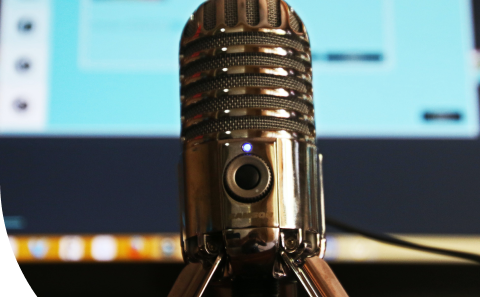
Are you a global marketing professional with stories to share?
Popular Posts
Popular industry news, interviews, technologies, and resources.
